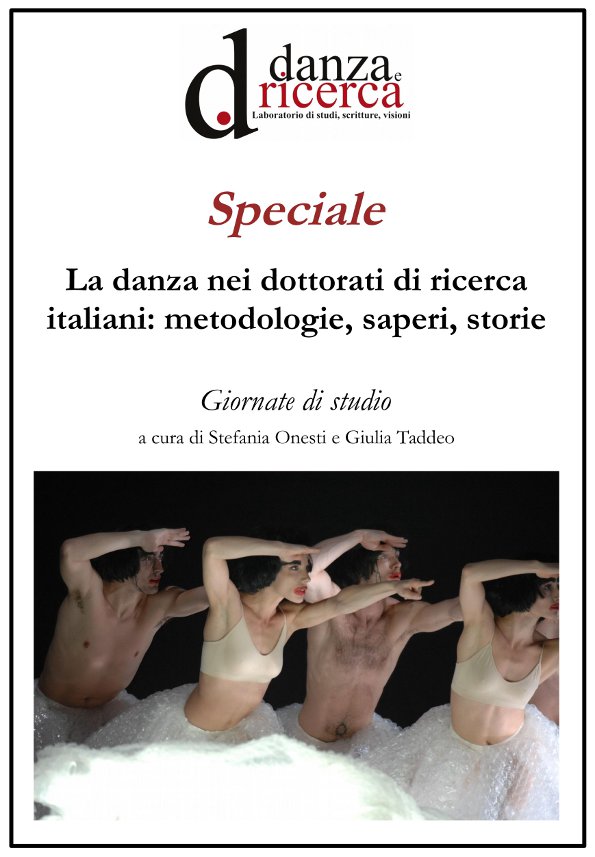Sconfinamenti. Per uno stile di pensiero tra estetica e coreologia
DOI:
https://doi.org/10.6092/issn.2036-1599/4968Abstract
Aesthetics and choreology are closely intertwined knowledge fields. They both deal with objects which, though commonly understood, tend to escape a unique and inclusive comprehension. The undefined method of both aesthetics and choreology is a direct consequence of the complexity and heterogeneity of their own objects fields. Faced with a field as extensive as that of sensitive and artistic experience – which is a subject investigated by different disciplinary approaches – the possibility to define in a precise and stable way concepts belonging to aesthetics or choreology is very difficult. The aim of the essay is therefore to highlight the “boundless and crossing” character of these studies and to show how their comparison and synergy can open toward prolific horizons of inquiry. More specifically, through the focus on their common foundation in the eighteenth century, we want focus on how dance constitutes an object of privileged (and exemplary) observation for the aesthetics and how, in turn, this branch of philosophy could help highlight and interrogate the theoretic capacity which lies enclosed in the evanescence, indefiniteness and corporeity of Terpsichore. Finally, we want to show how plotting this specification may bring fruitful suggestions for a style of thinking that – far from being immune or foreign to the clarity and distinction of the method – calls the attention of the scientific community – of yesterday and today – over the double movement inscribed in the very root of “logos”: the act of selection and choice, but also the collecting and merging that characterize every activity of the rational thought and, then, every authentic and fruitful search.
Downloads
Published
How to Cite
Issue
Section
License
Copyright (c) 2015 Laura Aimo
Copyrights and publishing rights of all the texts on this journal belong to the respective authors without restrictions.
This journal is licensed under a Creative Commons Attribution-NonCommercial 4.0 International License (full legal code).
See also our Open Access Policy.





